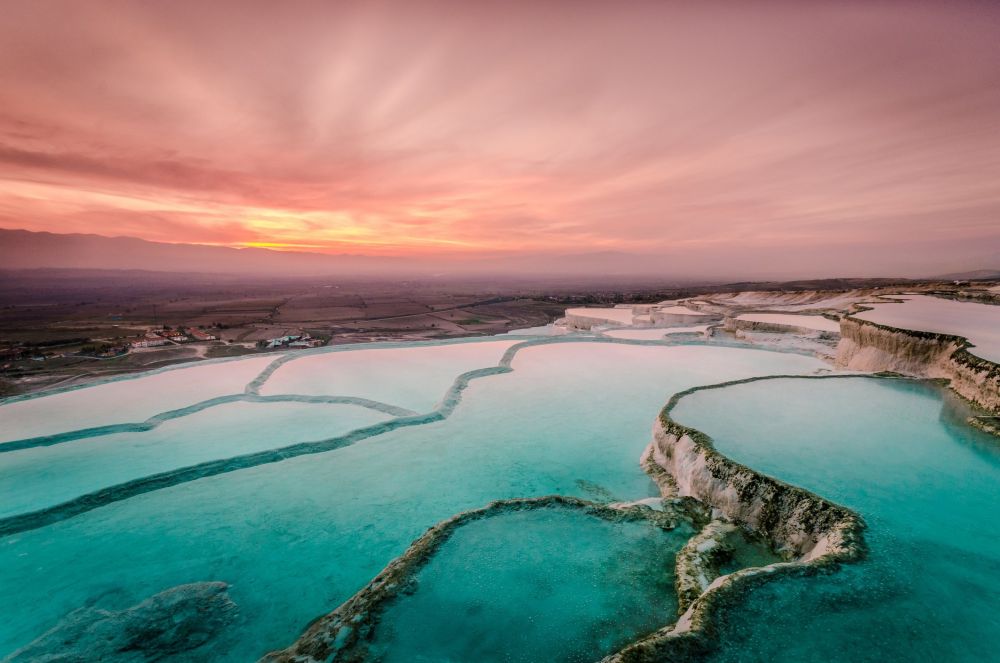

Pamukkale, located in the River Menderes valley in Turkey's inner Aegean region, is famous for its otherworldly landscape of mineral forests, petrified waterfalls, and a series of terraced basins. The name Pamukkale translates to "Cotton Castle" in Turkish, which vividly describes the natural white travertine terraces created by calcium deposited by the flowing thermal waters.
The area has been a popular destination for thousands of years, originally attracting visitors during the Greco-Roman period. The ancient city of Hierapolis was founded in the 2nd century BC by the King of Pergamon, Eumenes II, taking advantage of the site's thermal waters. The hot springs at Pamukkale were believed to have therapeutic properties and drew people seeking cures for ailments. Over centuries, Hierapolis became a healing center where doctors used the thermal springs as a treatment for their patients.
The modern history of tourism in Pamukkale began during the 20th century when the site gained international attention for its unique geological formations and historical significance. In 1988, Pamukkale and Hierapolis were designated as a UNESCO World Heritage Site, which substantially increased the global awareness and tourism potential of the area.
With the influx of international visitors, the Turkish government and local businesses invested in the development of tourism infrastructure, including hotels, restaurants, and improved transportation. The site has faced challenges related to the preservation of its delicate travertine formations. In response, measures have been taken to protect the terraces from the adverse effects of excessive tourism. For example, the flow of water has been carefully managed, and visitor pathways have been constructed to minimize direct contact with the terraces.
Today, Pamukkale remains a popular tourist destination, with visitors from around the world. The latest tourism trends show an increasing interest in sustainable and responsible travel. Tourists are encouraged to respect the natural beauty and historical significance of the site, ensuring its preservation for future generations.
Adventure tourism is also a growing trend in the area, with activities such as paragliding offering breathtaking views of the white terraces and nearby ancient ruins. Moreover, wellness tourism continues to thrive with many visitors partaking in the thermal waters for relaxation and health purposes, continuing the age-old tradition that began with Hierapolis.
Visitors to Pamukkale today can still bathe in its thermal pools, explore the ruins of Hierapolis, and witness the beauty of the natural travertine terraces. Additionally, they can visit the Hierapolis Archaeology Museum, housed in the former Roman Bath, to learn more about the site's rich history.
By observing the area's guidelines and contributing to local conservation efforts, tourists can enjoy the astounding natural and historical wonders of Pamukkale while ensuring that this spectacular site endures for centuries to come.